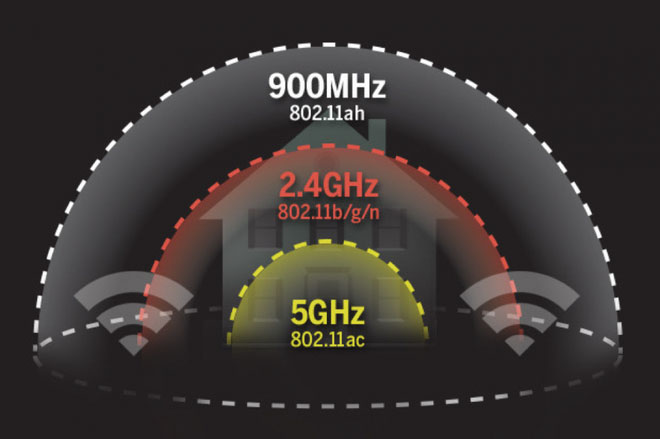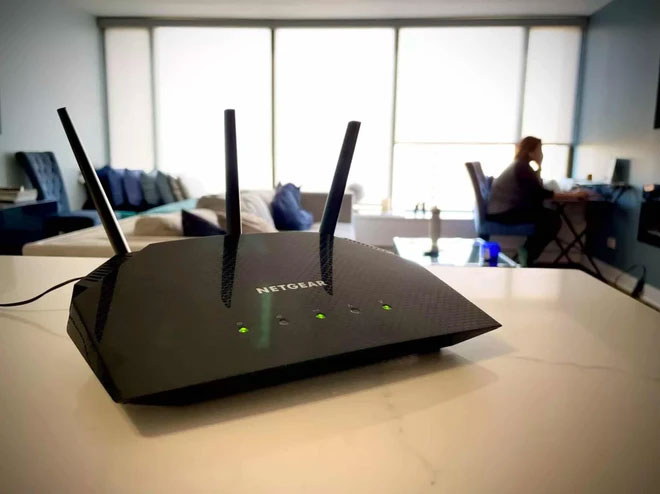The new Wi-Fi standard named HaLow enables smart devices to transmit signals over long distances while consuming less power.
The Wi-Fi Alliance has announced Wi-Fi HaLow, a new standard that allows smart devices to transmit Wi-Fi signals on sub-1 GHz frequencies with a maximum range of 1 km, further than other Wi-Fi standards while consuming less energy.
Wi-Fi HaLow transmits signals at a frequency of 900 MHz, which is lower than the 2.4 GHz or 5 GHz bands used by home Wi-Fi networks. While higher frequencies are suitable for transmitting large amounts of data simultaneously, lower frequencies provide a wider coverage area, making them ideal for smart sensors that need to transmit data over long distances using Wi-Fi.

Wi-Fi HaLow (802.11ah) can transmit signals over long distances with a lower frequency. (Image: Juxtology).
Additionally, battery-powered sensors will have longer lifespans because Wi-Fi HaLow consumes less energy. “Low-power connectivity is essential for sensors, wearable devices, or measuring instruments that require battery life lasting for years,” the Wi-Fi Alliance described in a press release.
The improvements of Wi-Fi HaLow are suitable for Internet of Things (IoT) devices in home, industrial, and agricultural sectors. According to CNET, there are currently 13.8 billion IoT devices operating worldwide, with the number expected to nearly double to 30 billion by 2025.
“Wi-Fi Certified HaLow expands Wi-Fi’s leading role in the IoT space, catering to use cases that require long-range and low energy consumption,” said Edgar Figueroa, President of the Wi-Fi Alliance, noting that the new Wi-Fi standard will be applied to IoT devices across various fields.
In addition to several enhancements, Wi-Fi HaLow still integrates other Wi-Fi features such as WPA3 security, simple setup, and the ability to synchronize with existing IP networks.

The Wi-Fi HaLow standard is suitable for IoT devices that need to transmit signals over long distances. (Image: CNET).
Besides Wi-Fi HaLow, the Amazon Sidewalk protocol launched earlier this year also allows for long-range data transmission with low energy consumption based on Bluetooth LE and LoRa. However, devices need to integrate LoRa communication circuits to connect over long distances. In contrast, Wi-Fi HaLow only requires a Wi-Fi chip that supports this standard.
Phil Soli, Director of Research at IDC, stated that Wi-Fi HaLow has been equipped for security cameras and tablets in the industrial sector, with widespread commercial deployment expected in 2022, including smart home devices, smart city projects, and retail markets.


















































